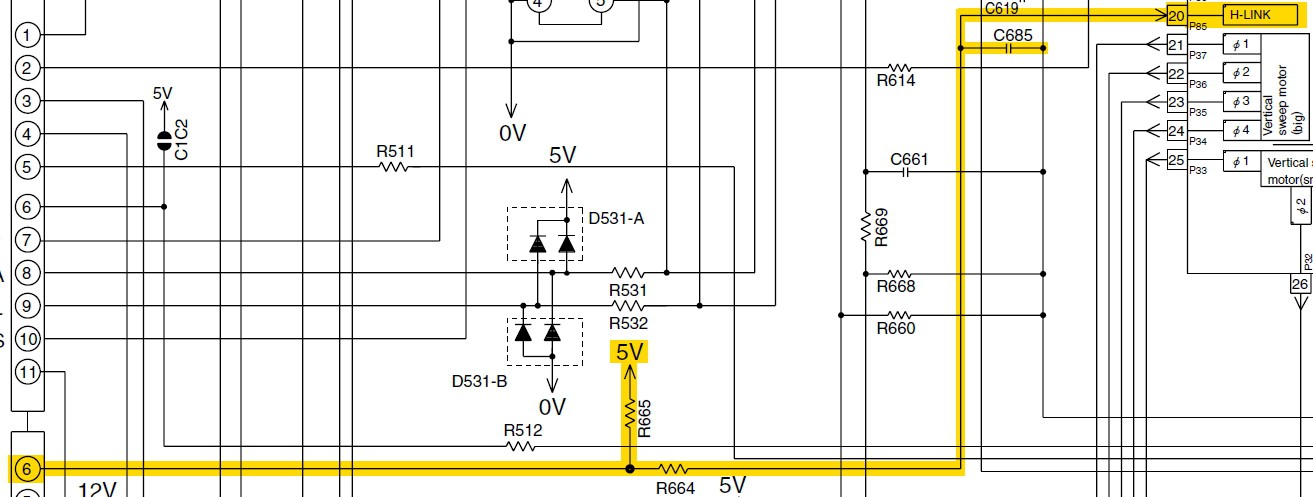After more than five days of intense search on the internet, whether in Japanese, English or even French, and using Google, Yahoo, Baidu and Bing (shame on me), I didn't find any more information regarding that RAC adapter or the CN7 connector. It's almost as if I'm the first person ever to investigate a Hitachi air conditioner! Giving it a second thought, that might actually be the case...
Let's start again with a different approach. I realized my air conditioner is a Japanese-market-only model because no matter what, I couldn't find even a single document in English. Since I also couldn't find a service manual in Japanese, I thought, "Maybe I should look for a similar model intended for international market, or at least for English-speaking-countries".
So here I am, back to my old friend Google, and I searched for "Hitachi air conditioner service manual". First result seemed to promising: HITACHI RAS-60YH5 SERVICE MANUAL Pdf Download.
I opened it and started reading. December 2005, so it's older than mine but still... and them, by page 35, I'm like, "Are you kidding me?! That's a f***ing circuit diagram of the remote control!". I quickly flipped through the following pages and here it was, the circuit diagram of the air conditioner's mainboard. Unfortunately, no CN7 for this model, just a CN9 labeled HA. Okay, let's go crazy and download as many service manuals for Hitachi air conditioners as I can find.
Well, there are nearly 2000 entries for Hitachi air conditioners on that site, so I just downloaded 30 service manuals. After going through all of them, I found that 20 of them included a circuit diagram with CN7. Among those 20, 13 are for models from 2008 to 2010, and 2 are for models almost identical to mine (same specifications and the same remote control).

Exactly as I confirmed earlier: pin 1 is 12V, pin 3 is unused and pin 5 is GND. There's no label for pin 6, but CN7connector is a 6-pin PA connector from JST (datasheet).
All that's left is to figure out pin number 6...

Well, it's an input with a 5V pull-up resistor directly connected to the microcontroller. I'm willing to bet that the state of this input enables or disables the air conditioner's H-LINK connectivity function. And then, the final clue appearead.
 That's not Japanese but Chinese. The character "有" is the same in both languages and means "active/present/valid". However, I didn't recognize the other character so I opened www.qhanzi.com and input the unknown character. It turned out to be "无" which means ”no/not/nothing". So pin 6, the H-LINK pin, is active LOW (inactive HIGH)!
That's not Japanese but Chinese. The character "有" is the same in both languages and means "active/present/valid". However, I didn't recognize the other character so I opened www.qhanzi.com and input the unknown character. It turned out to be "无" which means ”no/not/nothing". So pin 6, the H-LINK pin, is active LOW (inactive HIGH)!What a great detective job that was! I found the exact pinout of the CN7 connector, and now know it must use serial communication. The last pin is an input that is active LOW to enable H-LINK connectivity function.
 Florian
Florian
Discussions
Become a Hackaday.io Member
Create an account to leave a comment. Already have an account? Log In.
>That ain't Japanese but Chinese.
Well you live there so you know that it's Kanji which uses Chinese characters but pronounced the Japanese way and sometimes means something subtly different. For example https://green-possum-2010.blogspot.com/2010/09/no-material.html where 料 means material in Chinese but charge in Japanese. Also https://green-possum-2010.blogspot.com/2010/09/rishiri-2.html and https://green-possum-2010.blogspot.com/2010/09/kushiro.html where 汤 means soup in Chinese but hot water or spa (yu) in Japanese, hence my joke about foot soup and hand soup there.
But you have translated the characters for present and absent correctly.
Are you sure? yes | no